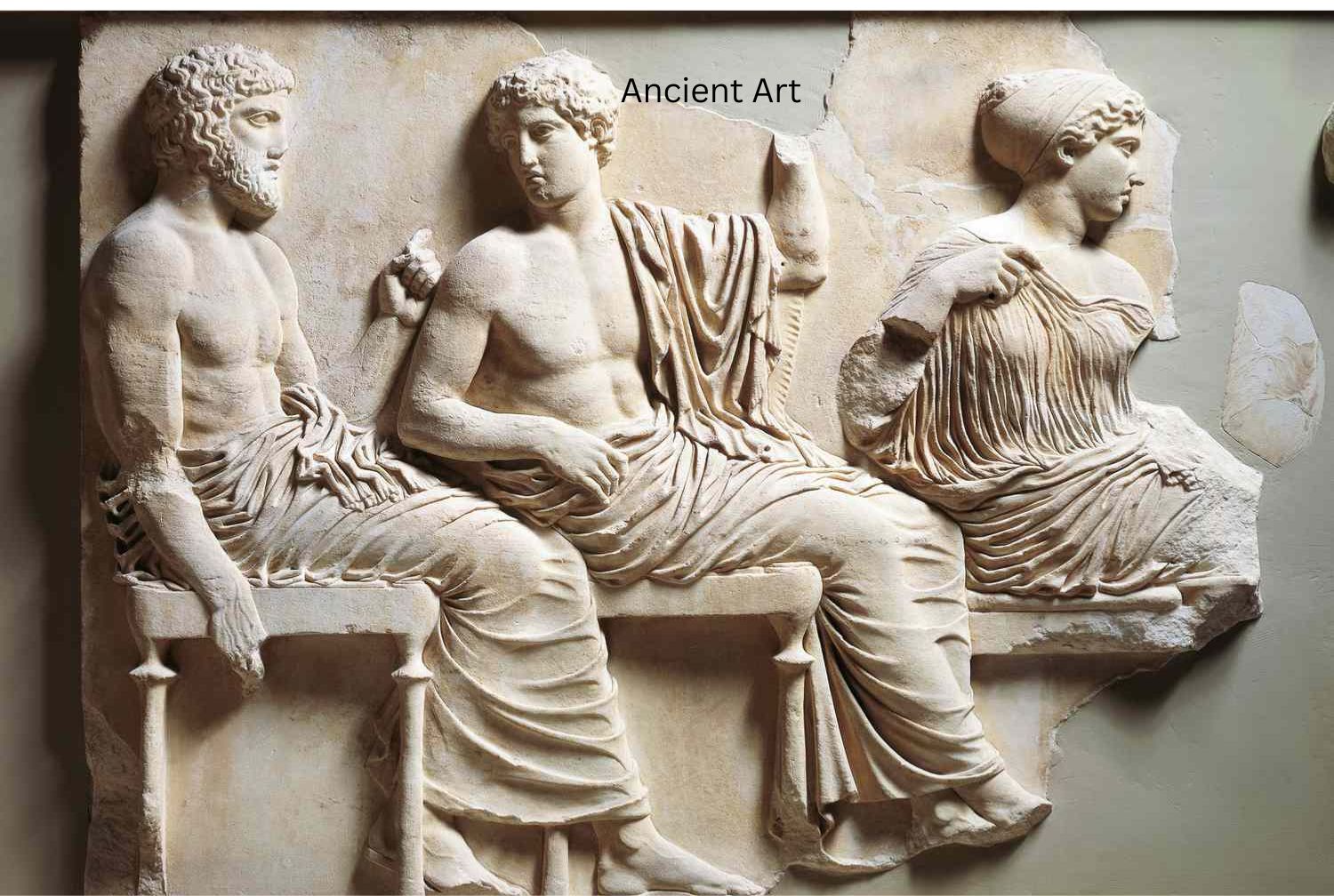arts
Timeless Treasures: Exploring the Significance of Ancient Art

Art has the power to transcend time and connect us with the past in ways we can hardly imagine. Ancient art, in particular, serves as a remarkable window into civilizations long gone. It tells stories of human creativity, culture, and daily life that resonate even today. From cave paintings to intricate sculptures, each piece holds secrets waiting to be uncovered.
As we explore the significance of ancient art, we’ll journey through history’s rich tapestry. We’ll discover how these timeless treasures not only reflect aesthetic sensibilities but also embody deep cultural meanings and historical narratives. Join me on this fascinating exploration as we delve into the world of ancient artz!
The Evolution of Art Throughout History
Art has been a powerful form of human expression for millennia. It began with cave paintings, where early humans communicated their experiences and beliefs through images. These primitive artworks laid the foundation for storytelling in visual forms.
As civilizations advanced, so did artistic techniques and styles. The Egyptians mastered symbolism, while the Greeks focused on realism and proportion. Each era brought new materials and ideas that reshaped how art was created.
The Renaissance marked a significant turning point, emphasizing individuality and perspective. Artists like Leonardo da Vinci pushed boundaries, merging science with creativity.
With each movement—Baroque, Impressionism, Cubism—artists continued to challenge norms. Modern art emerged as an explosion of experimentation; artists broke free from traditional constraints.
Throughout history, art has reflected cultural shifts and societal changes. Its evolution remains a testament to humanity’s diverse narratives across time periods.
The Cultural and Historical Significance of Ancient Art
Ancient art serves as a mirror reflecting the complexities of past civilizations. Each piece tells stories of everyday life, religious beliefs, and societal norms that shaped entire cultures.
Artifacts from ancient Egypt reveal intricate details about their burial practices and deities. Greek sculptures celebrate human form and philosophy, showcasing ideals cherished by society.
The significance extends beyond aesthetics. These artworks provide insight into trade routes, technological advancements, and social hierarchies. They illuminate how communities interacted with one another.
Moreover, ancient art has become a universal language transcending time and geography. It connects generations through shared experiences of beauty and creativity.
Preserving these treasures allows future societies to engage with their heritage deeply. Understanding our past through ancient art fosters appreciation for cultural diversity in today’s world.
Conservation and Preservation of Ancient Art
Conserving ancient art is a delicate dance between reverence and modernity. Each piece tells a story, often dating back thousands of years. These artifacts are not just remnants; they embody the beliefs, struggles, and triumphs of past civilizations.
Preservation efforts require meticulous attention. Experts utilize advanced technologies to analyze materials without causing damage. Techniques like 3D scanning allow for detailed documentation while also safeguarding against deterioration.
Environmental factors pose significant threats too. Temperature fluctuations, humidity levels, and pollutants can all erode these precious pieces over time. Museums and cultural institutions create controlled environments to mitigate these risks.
Public awareness plays an essential role in conservation as well. Education initiatives encourage communities to value their heritage while promoting responsible stewardship of ancient art treasures globally.
Famous Ancient Art Pieces Around the World
The world is replete with ancient art pieces that capture the imagination. One of the most iconic is the Rosetta Stone, discovered in Egypt. This granodiorite slab unlocked the secrets of hieroglyphs and opened a new chapter in understanding Egyptian civilization.
In Greece, the Parthenon marbles stand as a testament to classical artistry. Crafted by Phidias, these sculptures depict mythological scenes and celebrate Athenian culture.
Across Asia, The Terracotta Army guards Emperor Qin Shi Huang’s tomb in China. Each soldier is unique, showcasing an incredible level of craftsmanship from 210-209 BC.
From Africa comes Benin Bronzes, intricate plaques that narrate stories of royalty and power from Nigeria’s historic Kingdom of Benin. These artifacts reveal much about their society’s artistry and values.
These remarkable creations not only reflect artistic brilliance but also preserve rich histories waiting to be explored further.
How Ancient Art Continues to Influence Modern Society
Ancient art remains a powerful source of inspiration in contemporary culture. Artists today draw from the techniques and themes prevalent in ancient civilizations, infusing their work with historical depth.
Designers often look to the intricate patterns found in textiles or pottery for modern fashion collections. The rich symbolism of ancient motifs finds its way into everything from home decor to commercial branding.
Moreover, architecture is deeply influenced by classical forms. Elements like columns and arches can be seen in urban landscapes worldwide, marrying history with modern functionality.
Film and literature also reflect this influence. Storytelling often revisits mythological narratives, showcasing timeless lessons that resonate today.
The revival of traditional crafts showcases another facet of this connection. Artisans are breathing new life into age-old practices, ensuring these skills endure while enhancing our appreciation for heritage.
Through various mediums, ancient art continues to shape our understanding of aesthetics and culture today.
Conclusion:
Ancient art serves as a window into the past. Each piece tells stories of cultures, beliefs, and traditions long gone.
Its significance transcends time. It connects us to our ancestors and their experiences. The colors, textures, and forms offer insights that textbooks often miss.
Engagement with ancient art fosters appreciation for creativity and human expression across millennia. This connection is vital in understanding our own identities today.
As we move forward in a rapidly changing world, ancient art continues to inspire innovation while rooting us in history.
Embracing these treasures enriches our lives and encourages respect for diverse cultures worldwide.
FAQs:
What is ancient art?
Ancient art refers to artworks created during the early civilizations, including sculptures, pottery, paintings, and architecture from various cultures around the world. This type of art reflects the beliefs, practices, and daily lives of those who created it.
Why is ancient art important?
Ancient art serves as a crucial link to our past. It helps us understand historical contexts, cultural developments, and societal values of earlier societies. These artworks tell stories that transcend time.
How can I view ancient art?
Many museums worldwide house impressive collections of ancient art. Traveling exhibits also provide opportunities to see these treasures in different locations. Virtual tours are increasingly available online for those unable to travel.
What are some famous examples of ancient art?
Famous pieces include the Parthenon frieze from Greece, Egyptian hieroglyphs found on tomb walls, Roman mosaics depicting mythological scenes, and cave paintings like those in Lascaux in France.
How does ancient art influence modern artists?
Modern artists often draw inspiration from techniques and themes present in ancient works. The use of symbolism or certain materials pays homage to timeless traditions while allowing new interpretations within contemporary contexts.
Are there efforts being made to preserve ancient artwork today?
Yes! Conservationists work tirelessly to restore and protect these artifacts against deterioration caused by environmental factors or human activity. Many organizations focus on educating the public about their significance too.
Can anyone create pieces inspired by ancient styles today?
Absolutely! Artists frequently incorporate elements from various periods into their own work as a form of homage or interpretation while contributing fresh perspectives on age-old themes.

-

 Travel5 months ago
Travel5 months agoTop 5 Travel Booking Software Solutions for Seamless Trip Management
-

 News5 months ago
News5 months ago“Newztalkies: Your Gateway to Trending News and Engaging Stories
-

 Fashion:6 months ago
Fashion:6 months agoWebfreen.com Fashion: Style, Quality, and Affordability Combined
-

 home improvement5 months ago
home improvement5 months ago10 Inspiring Sunroom Ideas to Brighten Your Home
-

 games6 months ago
games6 months agoRetro Bowl Unblocked: Play Anytime, Anywhere!
-

 Entertainment5 months ago
Entertainment5 months agoExploring the World of Movierulz HD: Your Ultimate Destination for Movies
-

 Travel5 months ago
Travel5 months agoTravelsfornow.com: Your Conections To Global Adventures
-

 Entertainment4 months ago
Entertainment4 months agoThe Ultimate Guide to Supporting Your Favorite Artists on Ko-fi: Featuring Gojo Sensei